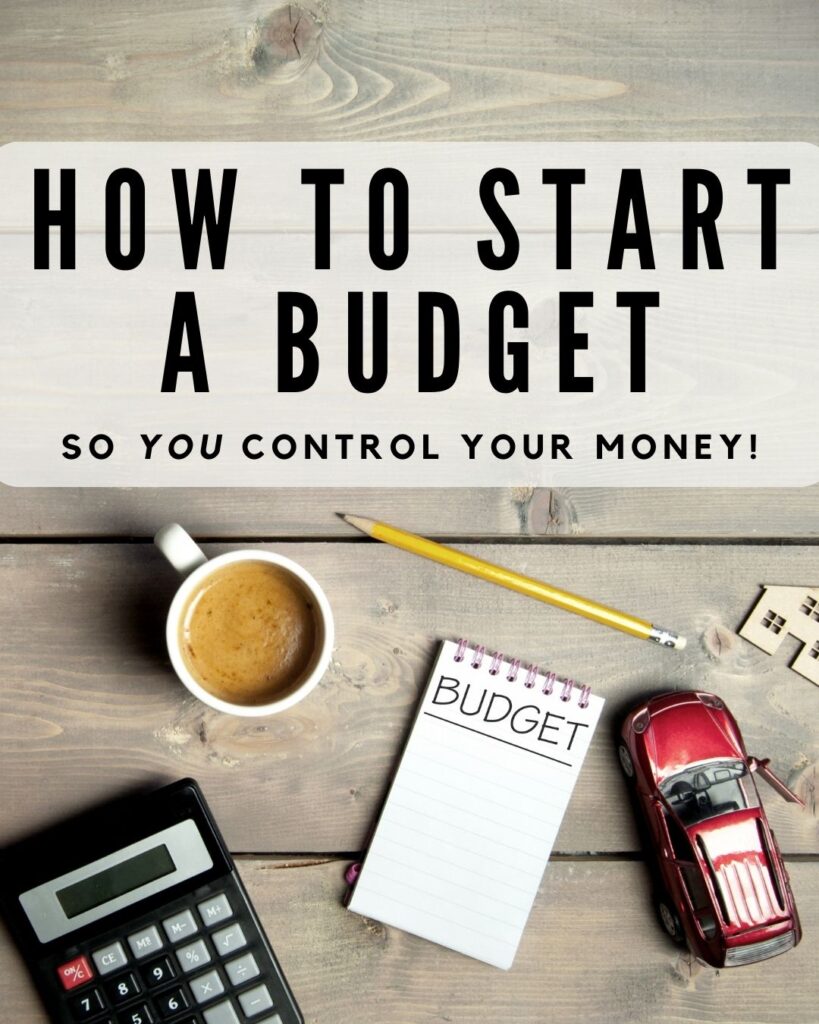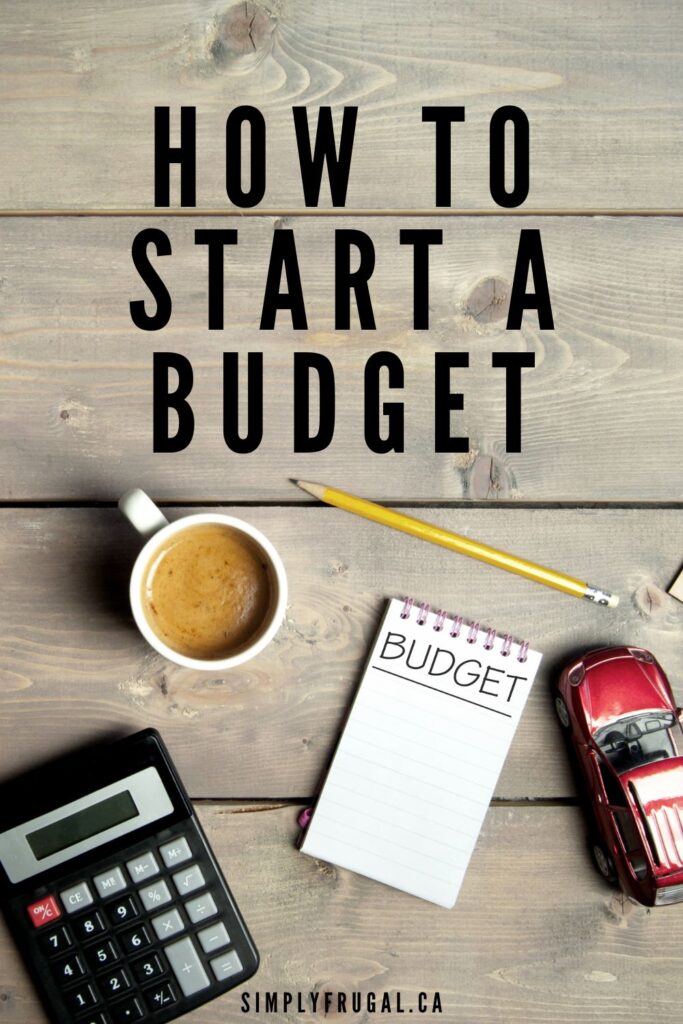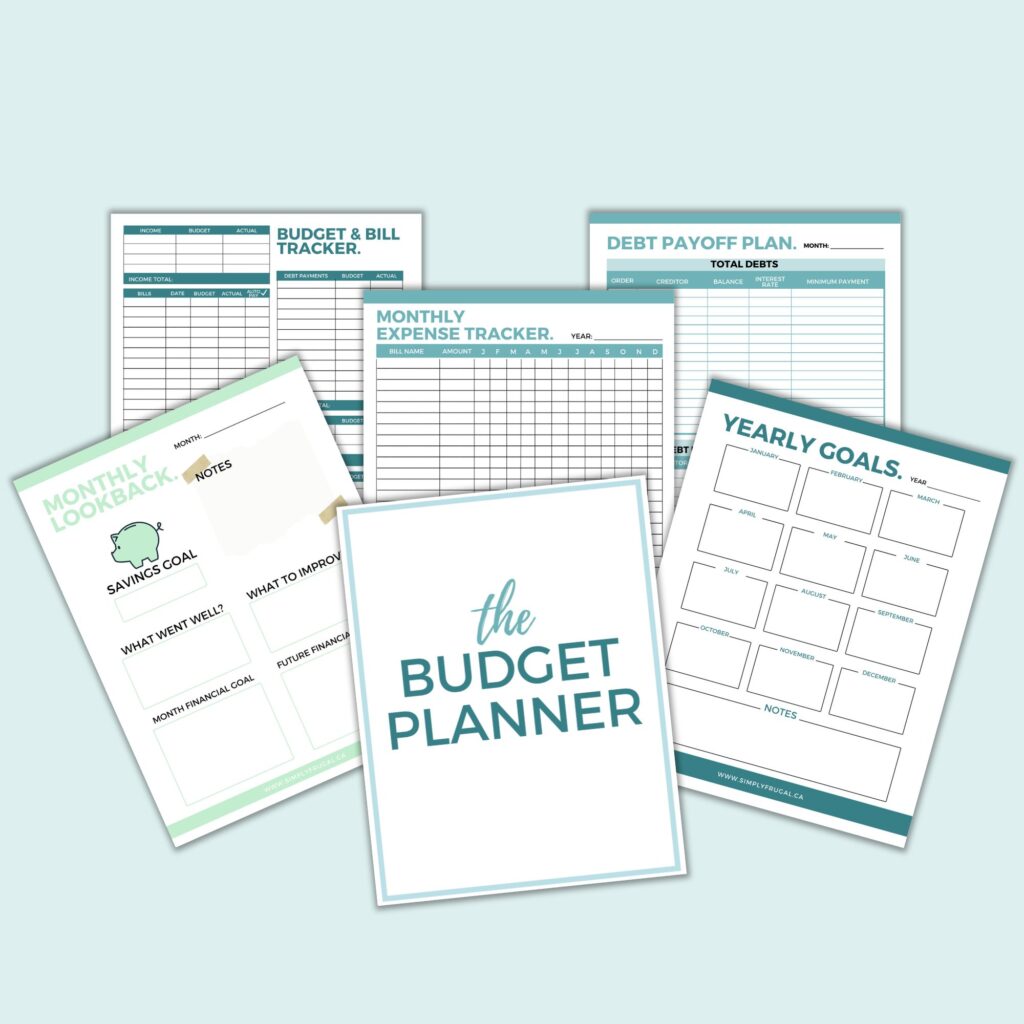
When we first started to use a budget we really didn’t want to commit to such a boring task. Like many, we were used to tracking expenses in our head and checking in on the bank account to see how much money we had left. Looking back it was probably the worst thing we did for our personal finances and I can’t believe we did that.
How to start a budget
Budgeting can be overwhelming at first but it doesn’t have to be if you plan it out correctly. No matter what your situation or money mistakes are, or were, a budget is necessary. I typically equate this to a business that has a yearly budget so they know what they can and can’t do with the company money. How is a company supposed to sustain themselves if they have no budget? That’s right; they probably would go bankrupt or close shop. Your household budget is just as important as a business.
One of the first things I did when I started to blog at Canadian Budget Binder was put together a 10 step budgeting series. Many people wanted to know how we were saving so much money. It’s not really about how much money we were saving. It’s really about how we got to the point where we were actually saving money.

The easy answer was: with a budget. That’s what I’m going to show you today. The steps we took to get from Step 1 to Step 9 and eventually to complete debt freedom. We own our vehicles, have no consumer debt and will be paying our mortgage in full this year. All of this and still over 30 years until retirement (of course we may plan to retire early). The magic happened just from paying attention to our personal finances and spending less than we earn. It also helped that growing up we were savers. But the bulk of our money came just in the past 10 years. Not everyone wants to lead a frugal life, but it has it’s pros and cons and for us, well worth it.
The first step with budgeting
One of the first steps I talk about in my budgeting series is simply “gathering all the information”. You can’t sit in front of an empty budget spreadsheet with no numbers. You need to get all the numbers from your bank accounts, credit cards, lines of credits, bills, whoever you owe, how much you owe, interest rates, due dates, etc. It’s like getting ready to bake a cake. If you don’t have all the ingredients for your recipe how will your cake grow? It won’t. It will sink because all the ingredients (in this case the numbers) are not available.
What is Net and Gross Income?
Net Income in simple terms, is the amount of money that you get after all your taxes are paid. So for those that get direct deposit from your employer that is your net. If you are self employed or no taxes are taken off that is NOT your Net Income, that is your Gross Income.
You can read in more detail each step of our budget and why we did what we did. The budget spreadsheet I designed for our family changed numerous times over the course of the year. A budget will always change and so should yours. You should never just set it and forget it.
There are a myriad of free budget spreadsheets and free budget programs to track expenses on the internet if you do a Google search. This free printable monthly budget form may help you. If you want to have a budget binder so you can manually track your budget and expenses, then do it. As long as you know exactly what is going in and what is going out. Some people chose to use a cash system and put it in envelopes or jars. If that’s what it will take to motivate you to start budgeting, then do it. You will see over time how easy it becomes and you will continue to challenge yourself further each month. We no longer carry cash we use credit cards for rewards. I don’t recommend this unless you are at a stage where you can pay your credit card in full every month.
9 Steps for Creating a Budget
- Step 1 – Gather all the information – As mentioned above, the first step in designing a budget is to gather all the information. You will need to get all the numbers from your bank accounts, credit cards, lines of credits, bills, whoever you owe, how much you owe, interest rates, due dates, etc.
- Step 2 – Categories – Every person/family is different so you need to decide what categories will suit your budget. You may need daycare while another family does not, for example.
- Step 3 – Tracking Receipts – This is so important and I can’t stress that enough if you want to know where you are spending your hard earned dollars. Have a plan in place so you save your receipts and input them into your tracking spreadsheet.
- Step 4 – Note Taking – Always make notes so you can backtrack information. Know where the purchase was made, how you paid for it, dates, etc.
- Step 5 – Organization – Keep organized and keep your workstation free from distractions.
- Step 6 – Who Does What and When – If you are in a relationship, budgeting doesn’t have to be a one person job. In fact my wife and I both share the budget duties as a team. If in the event something should happen to one of us, we both need to know what is happening with our personal finances. Don’t put the burden on one person.
- Step 7 – Balancing Our Budget – Your budget has to balance each month. If you can’t balance your budget you have to do one of 2 things: Make more money or spend less than you earn.
- Step 8 – Reading Our Bills – I can’t tell you enough to make sure you always read your bills and receipts when you are shopping. There have been times when I found errors on my communications bill where they charged us for services we did not get. You may also notice the wrong price on your grocery bill. This could result in a scanning code of practice where you get the item free up to $10, if the store participates. Most importantly, you catch an error where you were paying more than you should have. So many people get burned by not reading.
- Step 9 – Projected Expenses – This is a big category for us. We save close to $15k a year in it. What is it? In short, it’s an account where we keep money for items that we know we will have to pay for at some point during the year that our regular budget won’t be able to handle. We were always taking money from our emergency savings for these items which was wrong. A sticker for our vehicle once a year is not an emergency but should be saved all year long so the money is ready to be used when it comes due. We save $7.50 a month in a separate account for 12 months to pay for the sticker. $90/12 months. This has been the biggest stress reliever for us and one of the biggest reasons people fall off their budget. If you don’t factor in the small stuff, you may not have the money to pay for it. You should budget it in and save it.

Another thing that can really help when you’re overwhelmed or paralyzed by the thought of budgeting? Create a plan to stay focused! Check out this thoughtfully made BUDGET PLANNER – pages to help you achieve financial goals, track your bills and spending, discover what you did well, what you need to improve on and so much more!
I encourage you to take a deep breath if you are wanting to budget but are feeling stuck in getting started. Start living instead of existing and take back control of your personal finances. A budget is just one step in the process in working towards debt freedom, but one that may allow you the opportunity to drop that debt and get back in the game. Time to look at a budget as part of a lifestyle rather than a chore.
Mr.CBB is the voice behind Canadian Budget Binder a blog about Personal Finance, Relationships, Recipes, the famous Grocery Game Challenge and more. Join him on Facebook, Twitter and Pinterest.

Thanks for giving me the opportunity to share our budgeting tips with your fans.
Cheers
Mr.CBB